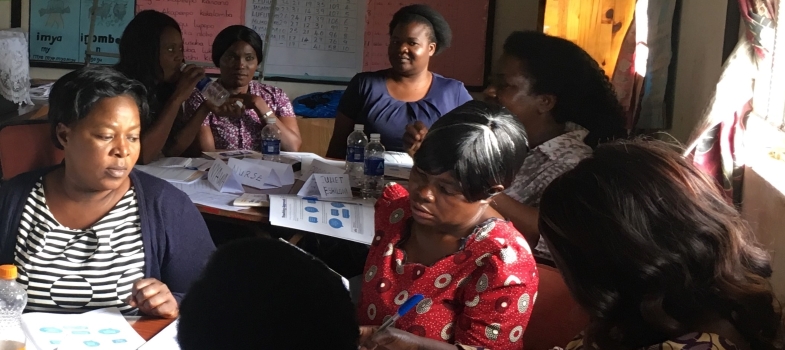Training guide
6. Assessing learning
6.2. Examples of formative assessment (2)
Classroom Example 3.4: Brainstorm to elicit prior knowledge and poster design
Audio transcript Charles, who teaches social studies and expressive arts at a small school in Mumbwa, wants to reinforce his Grade 6 learners’ knowledge of important events in history. In order to do this, he plans a lesson where his pupils need to develop a timeline which would represent key events that have occured in the history of Zambia, Central Province and Mumbwa District. Charles has already spent a number of days on this topic, so he is keen to know how much learners remember about the topic and how to help them to summarise their knowledge. He divides the class into six groups of four to six learners and gives them each a big piece of paper. On each he has written Zambia, Central Province or Mumbwa. He gives two groups a paper with 'Zambia' written in the centre; two groups a paper with 'Central Province' written in the centre; and two groups a paper with 'Mumbwa' written in the centre. Each paper has a table divided into two columns: Date/Year and Event. He asks the groups to write all the events they remember that have occurred within their allocated jurisdiction, adding the date or year it occurred. If they can’t remember the date, they can leave that blank as just naming the event already demonstrates they know that a key event took place. After 10 minutes, he asks the two groups who have worked on the same jurisdiction (Zambia, Central Province or Mumbwa) to exchange the pieces of paper and:
As Charles is not planning on asking each group to share their work at this stage, he walks around the groups paying special attention to their writing to ensure that the information is correct. After 10 minutes, he asks the groups to return their paper to the original group. After each group has received their paper back, Charles asks all learners to look at the board where he has drawn a timeline of the history of Zambia. To help pupils understand the concept of periods, he has divided the history of Zambia into the pre-colonial, the colonial and the independence periods. To give a sense of how long each of these periods is, he draws each period to scale. Charles asks each group to identify one event and asks for a volunteer to come to the board to place the event in the timeline. When all six groups have added their event, Charles explains that he would now like them to draw a timeline and present the events they have identified in the best possible way for others to learn from it. |
|
Did you notice
|
